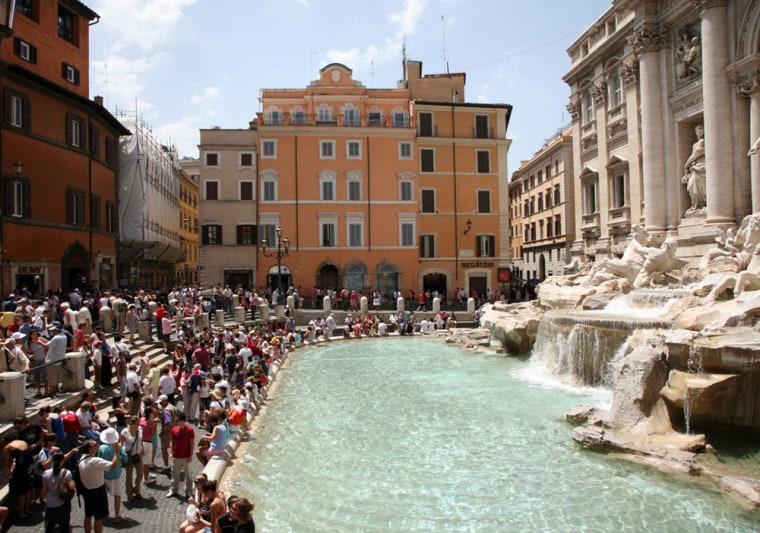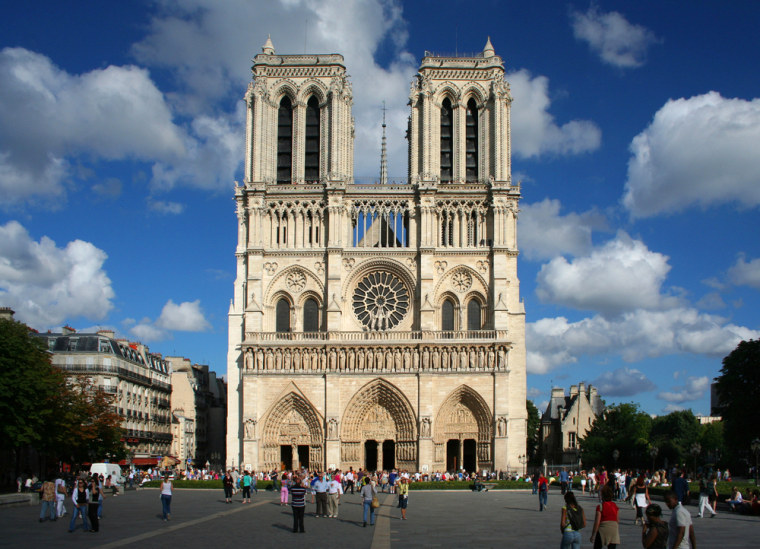It's not that an $11 bowl of official San Francisco clam chowder doesn't hit the spot. And, granted, there's no substitute for an authentic Machu Picchu souvenir visor. But not all overcrowded, merchandise-swollen travel hot-spots are created equal, and some deserve to be flagged as full-fledged tourist traps.
Weighing crowds against breathing room, bulging postcard racks against actual scenic vistas, and most of all hype against reality, we've compiled a list of ostensibly beloved destinations that you might consider striking from your global to-see list, no matter how glossy and luscious those brochures are.
Sometimes a thin line separates the tourist trap from the packed-but-worthwhile destination. Travel writer Bruce Northam of AmericanDetour.com says you know a real tourist trap by the noise level — "the place sounds more or less like a car alarm going off" — and by the fact that "you're paying incredibly exorbitant prices for goods and services that would be better enjoyed five miles away, for a fifth the cost."
For Josh Schonwald, editor of , the true humdingers are those that "drain you emotionally and financially, and leave you with an existential feeling: 'Why did I do this?' "
The travel 'experience'
Fortunately, there are strategies for avoiding the madness, and getting closer to what Schonwald calls "that authentic, magical travel experience."
"Know where the cruise ships dock and when they're in town," he advises. " is now on the Caribbean cruising routes, and they're starting to see real industrial-strength tourism on Duval Street."
For all its charms — because of all its charms — Europe has a particularly high density of tourist traps. Schonwald notes that the spots most overrun with camera wielders in Europe tend to be on the bus routes.
"If you see a double-decker bus, that's trouble," he adds. Visitors to and even , take note.
As travel writer and photographer Christopher P. Baker notes, even remote parts of South America have become inundated in recent years. He says that at Costa Rica's Manuel Antonio National Park, tourism infrastructure has spread so quickly that different species' migratory paths are being blocked, and populations are beginning to decline.
Some veteran travelers take the position that tourist traps are simply an inevitability to be accepted. Bill Bryson recently told The Guardian of London that "this the world we live in. There are a finite number of attractions and increasing numbers of people." True, but there are still steps that can be taken.
In general, there's a good chance you'll have an equally special — and far more pleasant — time at a randomly selected alternate stop just a mile down the road from the lines, Internet cafes, tchotchke stands and row after row of idling buses. As Baker puts it, these over-saturated spots bombard you with what's already familiar — food you know, products you know.
"There's nothing wrong with that, but when I travel, I go for the beauty of experiencing something totally new. I don't want to take my home with me," he says.
Besieged destinations
It can start to seem that every worthwhile destination is besieged. For this, and because some destinations are jammed for a reason, experts say the trick isn't always avoiding them so much as zigging when others zag. Want to shed that bikini on the French Riviera? Fine, but consider June instead of August, when the rest of France is letting it all hang out there too.

"Going to India without going to the Taj Mahal is like going to the without looking over the edge," Northam says. "Certain places, you have to go. But you can do it when the crowds aren't quite as insane." (Taj hint: Avoid it during full moons, when tourists apparently come out in force.)
No discussion of tourist traps is complete without acknowledgement of those places that merely seem like tourist traps. Plopped right in the middle of the San Francisco Bay is one of the most popular attractions in the state. Reservations are taken weeks in advance, and the tonnage of T-shirts, hats and pins sold has surely eclipsed that of the venue itself.
And yet Alcatraz is worth every penny — lose yourself in the riveting audio tour and the crowds all but vanish. The same must be said of the Great Wall of China, which remains a marvel despite the commercialization. Even New York's Times Square deserves a glimpse, if only to sight-see the sheer mass of sight-seers. Some madhouses make for thoroughly memorable trips.
The genuine article
Then there are places like , or , where it would make no sense to complain of the tourism industry somehow eclipsing the genuine article. In places like these, the flashing lights and the inflated prices are the genuine article.
The good thing about herds of tourists? Herd mentality. There may be a thousand people snapping photos of souvenir mugs at , but often just a short walk will take you completely out of their midst. With luck, Schonwald notes, "you can find another place near Fisherman's Wharf that still smells like fish, with an old Italian man making antipasti, that isn't such a zoo."
Why, finally, even bother to fight the gravitational pull of these famous places?
"Because when you find the real thing, it's beautiful, genuine, unscripted and inexpensive," Northam says. "People get conned into thinking they need the package vacation, but that's just limited imagination."
